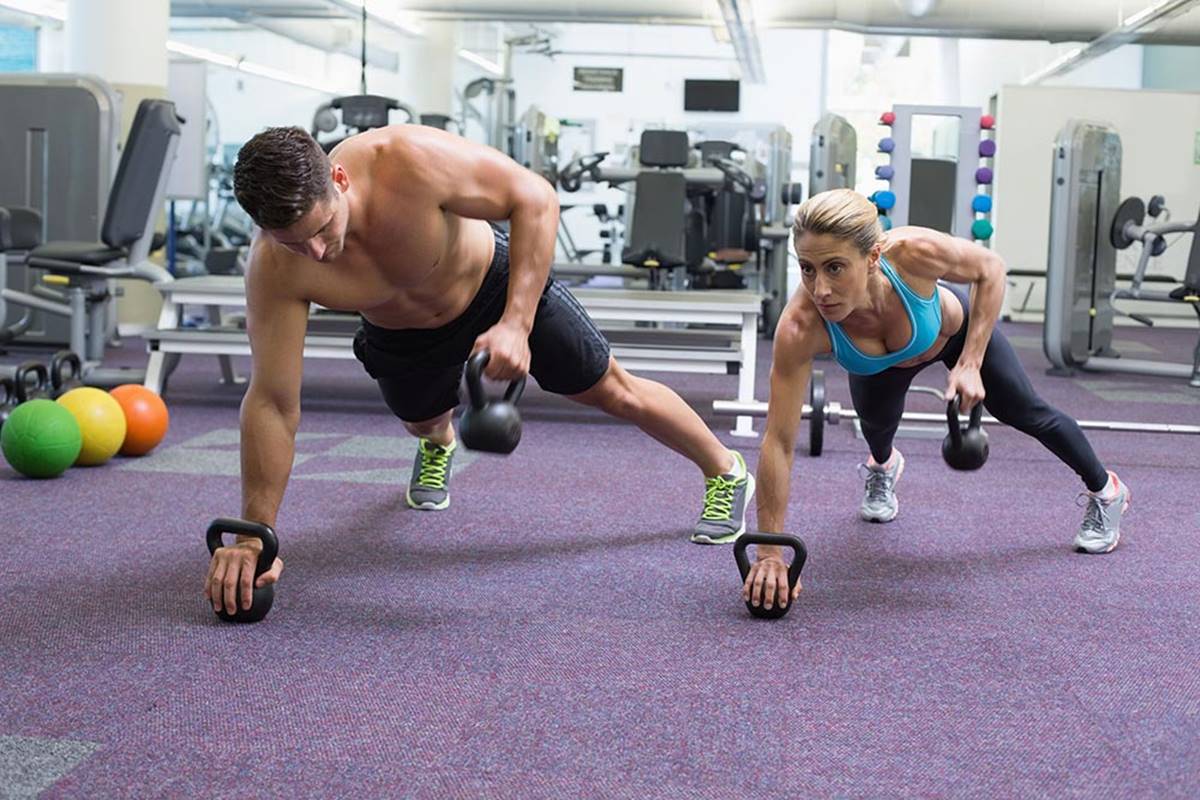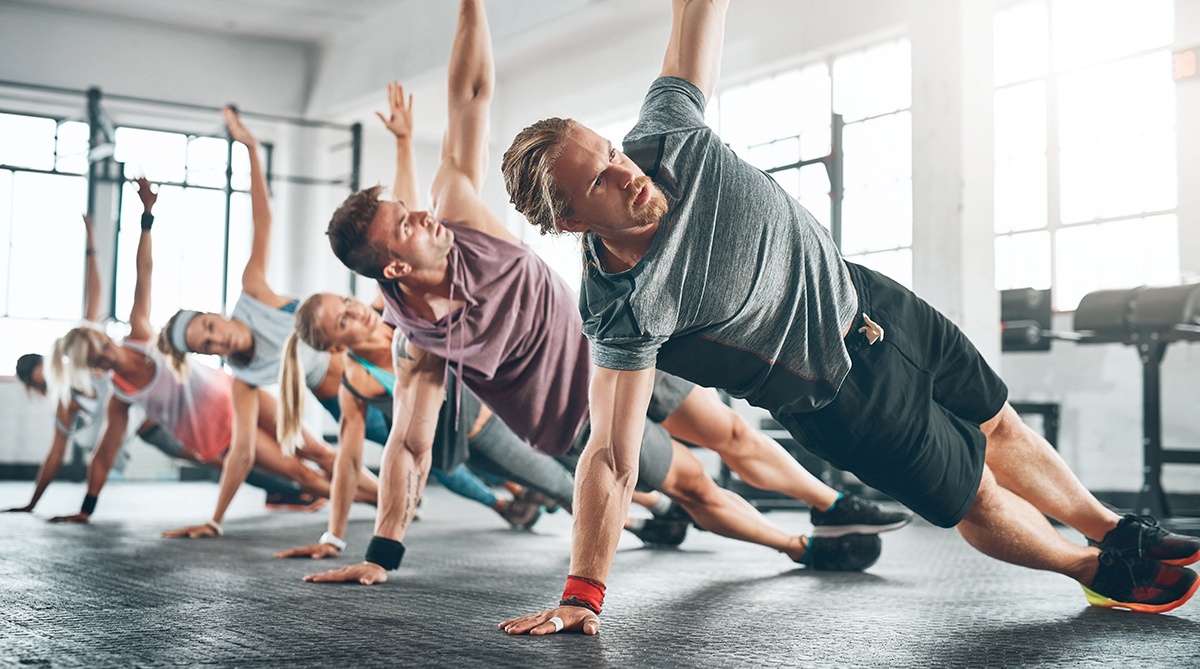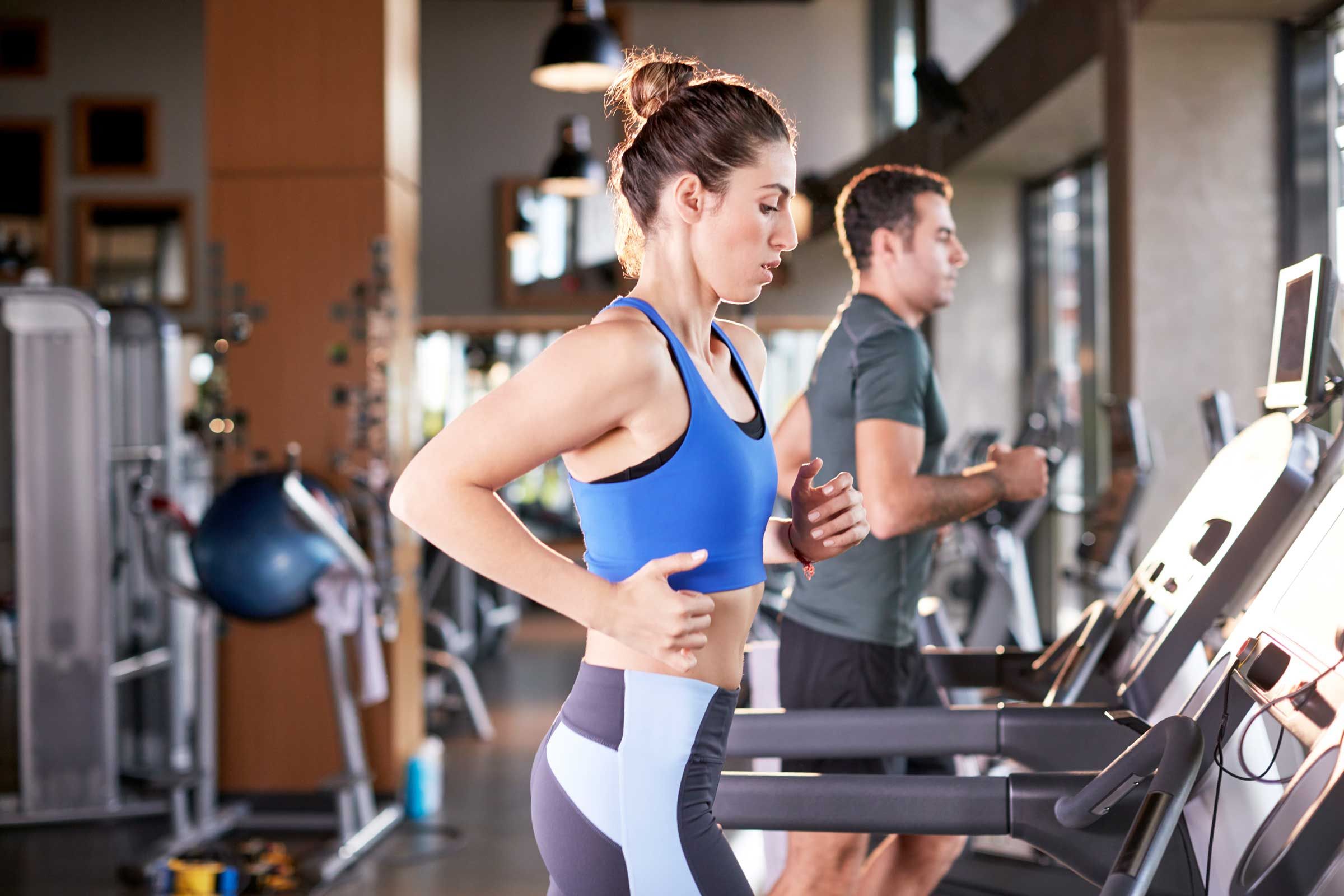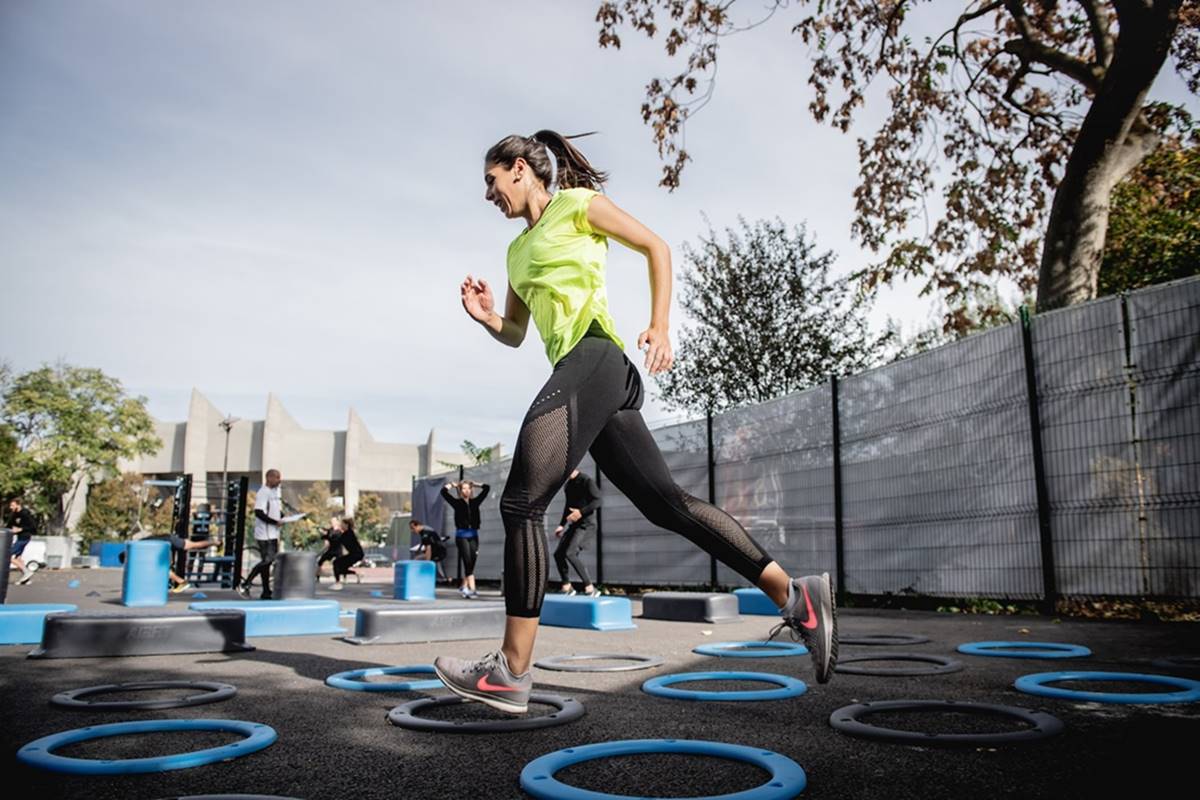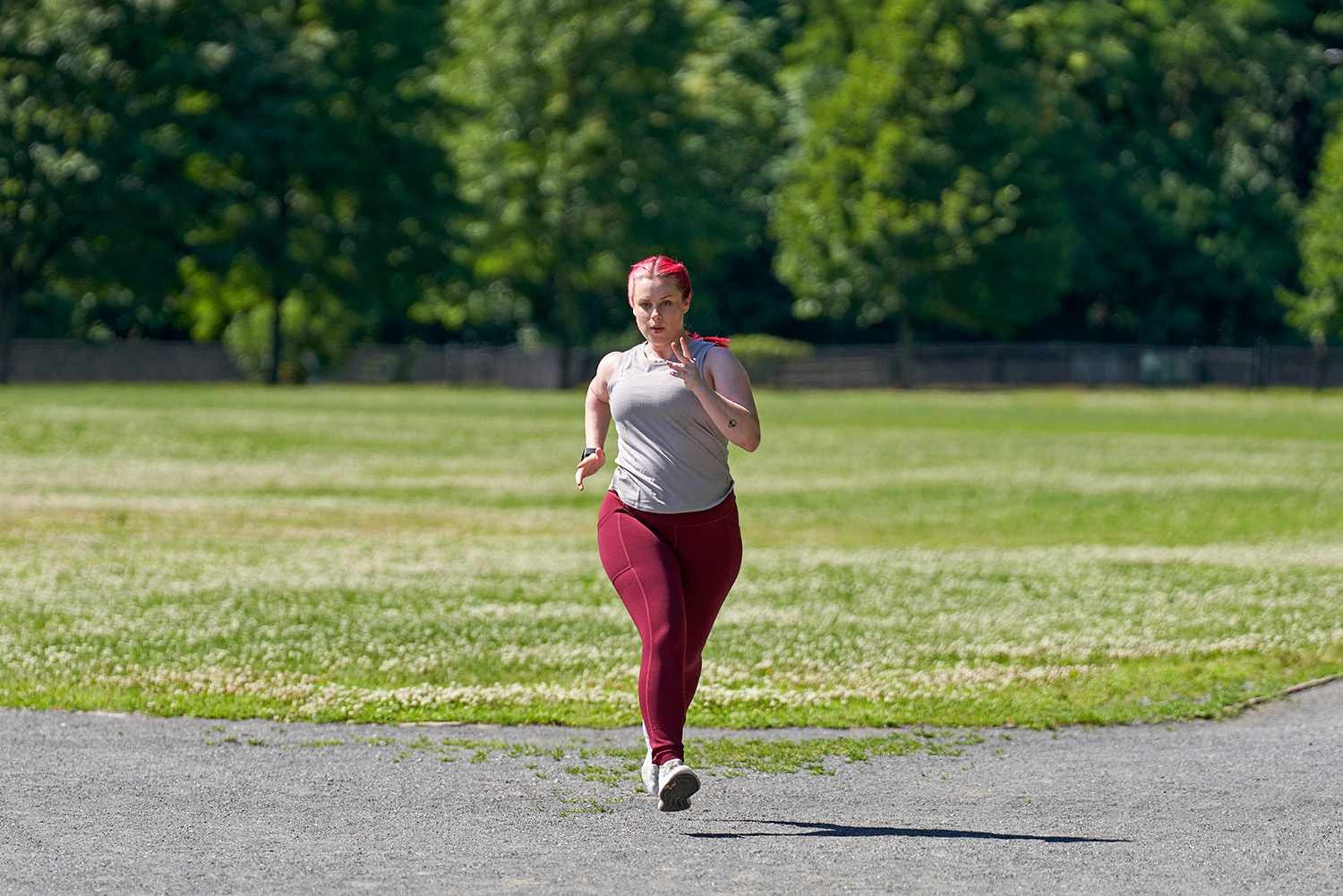

Featured
What Is RPE In Fitness
Modified: January 2, 2024
Discover the meaning of RPE, a fundamental concept in fitness training. Learn how to use it to optimize your workouts and achieve your goals. Featured in our comprehensive guide.
Introduction
In the world of fitness, achieving your goals and pushing your limits requires a comprehensive understanding of how your body responds to different exercises and intensities. One crucial aspect of this understanding is knowing how hard you’re working during a workout. This is where RPE, or Rate of Perceived Exertion, comes into play.
RPE is a subjective measure that allows individuals to gauge the intensity of their workout based on their own perception of effort. Unlike using objective measures such as heart rate or weight lifted, RPE takes into account factors such as fatigue, muscle soreness, and mental resilience. It provides valuable insights into how the body feels during exercise, allowing you to adjust your intensity levels accordingly.
By incorporating RPE into your fitness routine, you gain the ability to tailor your workouts to your current physical state, optimizing your training and avoiding unnecessary strain or injury. Whether you’re a beginner just starting your fitness journey or an experienced athlete looking to fine-tune your performance, understanding and utilizing RPE can be a game-changer.
In this article, we will explore the significance of RPE in fitness and the benefits of incorporating it into your training routine. We will also discuss how to determine your RPE, interpret the RPE scale, and address common misconceptions surrounding its use. By the end, you’ll have all the tools and knowledge you need to make RPE an integral part of your fitness journey.
Definition of RPE
Rate of Perceived Exertion (RPE) is a subjective method used to measure the intensity of physical activity. It is based on an individual’s perception of the effort required to perform an exercise or activity. Developed by Swedish psychologist Gunnar Borg in the 1970s, RPE has since become a widely accepted tool in the fitness industry.
RPE is typically measured on a numerical scale, with a range from 0 to 10 or 6 to 20. The scale allows individuals to rate their level of effort during exercise, with higher numbers representing higher intensity. The scale can also be customized to fit specific needs or preferences.
To determine one’s RPE, individuals should consider the overall sensation of effort during an activity, including factors such as breathing, heart rate, muscle fatigue, and mental focus. It is important to note that RPE is not purely based on physical exertion; it also takes into account the overall discomfort or strain experienced during the activity.
RPE can be used to assess various types of workouts, including cardiovascular exercises, strength training, and flexibility routines. It is a flexible and versatile tool that can be applied to both structured workouts and everyday activities. By incorporating RPE into your fitness routine, you gain a deeper understanding of how your body responds to different exercises and the impact they have on various physiological systems.
Overall, RPE provides individuals with an intuitive system for monitoring and adjusting their workout intensity. It allows for personalized and goal-specific training, helping individuals optimize their performance and progress towards their fitness goals.
Importance of RPE in Fitness
RPE plays a crucial role in fitness due to its ability to provide valuable insights into the intensity of a workout. Here are some key reasons why RPE is important:
1. Personalized Intensity: RPE allows individuals to tailor their workout intensity to their current physical state. Everyone has different fitness levels, and what may be challenging for one person might be too easy or too difficult for another. RPE provides a subjective measure of effort, ensuring that you’re working at an appropriate level for your individual capabilities.
2. Adjustments for Progression: RPE is a useful tool for tracking progress and making adjustments to your fitness routine. As you become stronger and more fit, your perception of effort will change. By consistently monitoring your RPE, you can gradually increase the intensity of your workouts to continue challenging your body and making progress towards your goals.
3. Preventing Overtraining and Injury: Pushing yourself too hard or training at excessively high intensities can lead to overtraining and increased risk of injury. RPE allows you to gauge your effort and make adjustments when necessary to avoid pushing yourself beyond your limits. This in turn reduces the risk of overuse injuries and promotes a safer and more sustainable approach to fitness.
4. Mental Endurance and Focus: RPE takes into account factors such as mental focus and overall discomfort during exercise. By paying attention to your perceived exertion, you can actively work on improving your mental endurance and pushing through challenging workouts. This mental aspect of RPE can be particularly useful in endurance activities or high-intensity workouts where mental resilience plays a significant role.
5. Individualized Training Plans: RPE allows for the creation of individualized training plans that cater to your unique needs and goals. By incorporating RPE into your fitness routine, you can design workouts that align with your specific training objectives, whether it’s improving cardiovascular endurance, increasing strength and power, or enhancing flexibility.
6. Versatility in Monitoring Different Workouts: RPE can be used to assess various types of exercises, making it a versatile tool for monitoring different workouts. Regardless of whether you’re performing cardio, strength training, or flexibility exercises, RPE provides a standardized way to evaluate and compare the intensity of different activities.
Overall, RPE is an essential tool in fitness that allows individuals to personalize their workouts, make informed adjustments, and optimize their training for the best possible results.
Benefits of Using RPE in Training
Using RPE in your training routine offers a multitude of benefits that can enhance your overall fitness journey. Here are some key advantages of incorporating RPE:
1. Flexibility and Adaptability: RPE allows for flexibility in your training routine. It takes into account your current physical state, allowing you to adjust the intensity on a day-to-day basis. This flexibility is especially helpful when dealing with factors such as fatigue, stress, or variations in your energy levels.
2. Precision in Workload Management: RPE provides a subjective measure of effort, allowing you to precisely manage your workload. By keeping track of your RPE during each exercise, you can ensure that you are training within appropriate intensity levels and avoid undertraining or overtraining.
3. Individualized Progression: RPE allows you to customize the intensity of your workouts according to your own fitness level and goals. This individualized progression ensures that you are constantly challenging yourself and pushing towards your desired outcomes, without risking injury or burnout.
4. Improved Mind-Muscle Connection: By focusing on your perceived exertion during each exercise, RPE helps develop a stronger mind-muscle connection. This connection allows you to better engage and activate the targeted muscle groups, leading to more effective and efficient workouts.
5. Enhanced Training Autonomy: RPE puts you in control of your training. Rather than relying solely on external metrics like heart rate or weight, RPE allows you to listen to your body and make informed decisions based on how you feel. This autonomy empowers you to take charge of your workouts and make adjustments based on your own unique responses.
6. Improved Goal Setting and Management: RPE provides valuable feedback on your effort levels during each session. By consistently tracking your RPE, you can accurately assess your progress towards your goals. If you consistently rate your workouts at a low RPE, it may indicate that you need to increase the intensity to align with your desired outcomes.
7. Mental Resilience and Confidence Building: RPE challenges your mental resilience during workouts, allowing you to develop mental toughness over time. By pushing through challenging exercises and higher RPEs, you build confidence in your abilities and train your mind to overcome obstacles in other areas of life as well.
By incorporating RPE into your training, you can optimize your workouts, maintain consistency, and achieve better results while ensuring that you’re training within safe and effective intensity levels.
How to Use RPE in your Fitness Routine
Incorporating RPE into your fitness routine is a straightforward process that can greatly enhance the effectiveness of your workouts. Here are some steps to help you effectively use RPE:
1. Familiarize Yourself with the RPE Scale: Understand the RPE scale you will be using. Whether it’s a scale of 0 to 10 or 6 to 20, familiarize yourself with the numbers and their corresponding levels of exertion. This will serve as a reference point for your perceived effort during training.
2. Start with a Baseline: Begin by determining your baseline RPE for various types of exercises. Start with exercises you are familiar with and rate your perceived exertion during a typical workout. This will help you establish a starting point to gauge your effort levels.
3. Pay Attention to Your Body: During your workout, consciously pay attention to how your body feels. Focus on factors such as breathing rate, heart rate, muscle fatigue, and overall discomfort. Take a mental note of the effort you’re exerting and be honest with yourself when assessing the intensity.
4. Rate your Perceived Exertion: After each set or activity, rate your perceived exertion using the RPE scale. Consider your overall perception of effort, taking into account both physical and mental factors. Choose the number that aligns best with your experience during the exercise.
5. Adjust Intensity Based on RPE: Use your RPE rating as a guide to adjust the intensity of your workouts. If your RPE is consistently low, it may indicate that you need to increase the intensity to challenge yourself. On the other hand, if your RPE is excessively high, it may be a sign to decrease the intensity to avoid overexertion.
6. Modify Based on Goals and Variations: Different goals and variations may require adjustments in your RPE. For example, if you’re focusing on strength gains, you may aim for higher RPEs during strength training exercises. Similarly, if you’re performing variations of an exercise, such as a modified push-up, adjust your RPE accordingly.
7. Regularly Reassess and Progress: As you become fitter and stronger, reassess your baseline RPE and adjust your training accordingly. Gradually increase the intensity levels by aiming for higher RPEs and challenging yourself. Regularly taking stock of your perceived exertion will help you track progress and continually push yourself.
Remember, RPE is a subjective measure, so it’s important to focus on your own perception of effort rather than comparing yourself to others. Over time, with practice and self-awareness, you will become more adept at accurately assessing your perceived exertion and making the necessary adjustments to optimize your fitness routine.
RPE Scale and Interpretation
The RPE scale is a numerical representation of perceived exertion levels during physical activity. While different scales may exist, the most commonly used are the Borg Rating of Perceived Exertion (RPE) scale, which ranges from 6 to 20, and the Category Ratio RPE scale, which ranges from 0 to 10. Understanding the RPE scale and interpreting your perceived exertion can help you gauge the intensity of your workouts more effectively.
Borg RPE Scale (6 to 20):
- 6: No exertion at all
- 7: Extremely light exercise
- 11: Light exercise
- 13: Somewhat hard exercise
- 15: Hard exercise
- 17: Very hard exercise
- 19: Extremely hard exercise
- 20: Maximal exertion
Category Ratio RPE Scale (0 to 10):
- 0: No exertion at all
- 1: Very light exertion
- 2: Light exertion
- 3: Moderate exertion
- 4: Somewhat heavy exertion
- 5: Heavy exertion
- 6: Very heavy exertion
- 7-10: Extremely heavy exertion
Interpreting your RPE rating is subjective and depends on your own perception of effort. However, here are some general guidelines to help you interpret your RPE:
Low RPE (6 to 11 or 0 to 2): A low RPE indicates light to moderate effort. You may feel minimal strain or fatigue during the exercise. This level of exertion is suitable for warm-ups, cool-downs, and recovery workouts.
Moderate RPE (11 to 13 or 3 to 4): A moderate RPE signifies a somewhat hard effort. You begin to feel a noticeable exertion, but it is still sustainable. Workouts at this intensity level are ideal for building endurance and aerobic fitness.
High RPE (13 to 17 or 5 to 6): A high RPE indicates hard to very hard efforts. You experience increased strain and fatigue during the exercise. This intensity is suitable for challenging workouts aimed at improving strength, speed, or power.
Maximal RPE (17 to 20 or 7 to 10): A maximal RPE suggests an extremely hard to maximal effort. You reach your physical limits, experiencing significant strain and fatigue. This level of exertion is typically reserved for short bursts of intense activity or high-intensity interval training.
It’s important to note that different activities and fitness levels can influence your RPE ratings. For example, an RPE of 15 during cardio exercise may feel different than an RPE of 15 during strength training. Additionally, your perceived exertion may vary based on factors such as fatigue, motivation, and environmental conditions.
Interpreting your RPE is a skill that develops over time through self-awareness and practice. Regularly comparing your perceived exertion with your actual performance and physiological responses can help you refine your understanding of the RPE scale and make more accurate adjustments to your fitness routine.
Factors Affecting RPE
Several factors can influence an individual’s perception of effort and, consequently, their Rate of Perceived Exertion (RPE). It’s essential to consider these factors when interpreting and using RPE in your fitness routine. Here are some key elements that can affect RPE:
1. Fitness Level: Fitness level plays a significant role in determining RPE. Individuals with higher fitness levels tend to perceive lower exertion for the same level of intensity compared to those who are less fit. As you become more physically conditioned, your RPE may decrease, leading you to work at higher intensities to achieve the same level of perceived effort.
2. Fatigue and Recovery: Fatigue levels can affect your perception of effort. When you are well-rested and fully recovered, your RPE may be lower compared to when you are fatigued or experiencing muscle soreness. It’s important to listen to your body and adjust your training intensity based on your recovery status.
3. Psychological Factors: Psychological factors, such as motivation, focus, and mental resilience, can impact your perception of effort. For example, during a challenging workout, being highly motivated and mentally focused can lead to a lower RPE, as you are able to push through discomfort and fatigue more effectively.
4. Environmental Conditions: Environmental factors, such as temperature, humidity, altitude, and air quality, can influence the perceived effort during physical activity. Extreme heat or cold, high altitude, or poor air quality may increase your perceived exertion, resulting in a higher RPE. It’s important to consider these factors when interpreting your RPE during outdoor workouts.
5. Exercise Modality: Different types of exercises or activities can elicit different perceptions of effort. Cardiovascular exercises, such as running or cycling, may result in higher RPE compared to strength training exercises for some individuals. The specific muscles utilized, movement patterns, and personal preferences can influence the perceived intensity and subsequently the RPE.
6. Personal Factors: Other personal factors, such as age, gender, body composition, and overall health, can impact RPE. Individuals with a higher body weight or decreased fitness levels may experience higher RPE for the same level of intensity compared to those who are leaner or more physically active.
It’s important to recognize that RPE is a subjective measure and can vary from person to person based on these influencing factors. Being aware of these factors and their potential effects on your perception of effort will help you interpret and utilize RPE more effectively in your fitness routine.
Tips for Using RPE Effectively
Using Rate of Perceived Exertion (RPE) effectively in your fitness routine can greatly enhance your training experience and help you achieve your goals more efficiently. Here are some tips to help you utilize RPE effectively:
1. Establish Your Baseline: Begin by determining your baseline RPE for different types of exercises. This will help you understand your perceived effort for various activities and serve as a reference point for future workouts.
2. Practice Self-Awareness: Develop a sense of self-awareness during your workouts. Pay attention to how your body feels and be honest with yourself when rating your perceived exertion. Tune in to your breathing, heart rate, muscle fatigue, and overall discomfort.
3. Use the RPE Scale Consistently: Be consistent in using the same RPE scale throughout your training. Whether it’s the Borg RPE scale (6-20) or the Category Ratio RPE scale (0-10), stick to one scale to ensure accurate interpretation and comparison of your effort levels.
4. Consider External Factors: Take into account external factors that may influence your perceived exertion, such as fatigue, stress, or environmental conditions. Adjust your RPE rating accordingly to ensure an accurate reflection of your effort level.
5. Compare RPE with Objective Measures: Compare your RPE with objective measures, such as heart rate, speed, or repetitions, to validate your perceived effort. This will help you establish a correlation between your subjective perception and the physiological responses of your body.
6. Regularly Reassess and Adjust: Regularly reassess your baseline RPE and adjust it according to changes in your fitness level. As you become fitter, you may need to increase the intensity of your workouts to maintain a consistent RPE, or vice versa if you’re new to exercise.
7. Listen to Your Body: Trust your body and listen to its signals. If your RPE consistently feels too high or too low compared to your perceived effort, adjust your intensity level accordingly to align with your fitness goals and capabilities.
8. Seek Guidance if Necessary: If you’re new to using RPE or if you’re unsure about accurately interpreting your perceived exertion, seek guidance from a qualified fitness professional. They can help you understand and implement RPE effectively in your training routine.
9. Log and Track Your RPE: Keep a training log where you record your RPE for each workout. This will help you track your progress, identify patterns, and make informed adjustments to your training intensity over time.
10. Enjoy the Journey: Lastly, remember that RPE is a tool to enhance your fitness journey. Embrace the process, enjoy the workouts, and use RPE as a guide to challenge yourself while maintaining a safe and sustainable training approach.
By following these tips, you can harness the power of RPE to optimize your workouts, make informed adjustments, and achieve better results while staying in tune with your body’s needs and capabilities.
Common Misconceptions about RPE
Rate of Perceived Exertion (RPE) is a valuable tool for gauging the intensity of your workouts, but there are some common misconceptions that can lead to misunderstandings or misuse. Let’s address some of the most prevalent misconceptions about RPE:
1. RPE is Only About Physical Effort: One common misconception is that RPE is solely based on physical effort. In reality, RPE takes into account both physical and psychological factors, including perceived fatigue, muscle soreness, and mental resilience. It is a holistic measure of overall exertion during exercise.
2. RPE is the Same for Everyone: RPE is subjective and differs from person to person, even for the same activity. Factors such as fitness level, training background, and individual perceptions can significantly influence how individuals perceive their effort. Comparing RPE between individuals may not accurately reflect the actual intensity of their workouts.
3. RPE is a Standalone Measure: RPE is most effective when used in conjunction with other objective measures like heart rate or pace. While RPE provides valuable insights into perceived effort, combining it with objective data can provide a more comprehensive understanding of your body’s response to exercise.
4. RPE Should Always Be High for an Effective Workout: A common misconception is that a workout is only effective if the RPE is very high. While high-intensity workouts have their place, optimal training incorporates a mix of intensities and allows for appropriate recovery. It’s important to listen to your body and adjust your intensity based on your goals and current physical state.
5. RPE Should Always Increase with Time: Some individuals believe that RPE should progressively increase with each workout or set to ensure progress. While gradual progression is essential for improvement, it doesn’t mean that RPE should consistently increase. Factors like fatigue, recovery, and exercise variations can cause fluctuations in RPE from session to session.
6. RPE Can Replace Professional Guidance: While RPE is a useful tool, it should not replace professional guidance from qualified fitness experts. Fitness professionals can provide personalized advice and help you determine the appropriate RPE range for your specific goals, taking into account various factors like fitness level, training history, and any underlying health considerations.
7. RPE is Static Throughout the Workout: RPE can vary within a single workout. Factors like warm-up, fatigue, or variations in exercises can impact your perceived effort. It’s important to monitor your RPE continuously and make adjustments as needed to ensure you’re working at the desired intensity level.
Understanding these common misconceptions about RPE can help you use this valuable tool more effectively in your fitness routine. Remember that RPE is subjective, and personal experience plays a crucial role in determining your perceived effort. Use it as a guide to optimize your training while also considering other relevant factors and seeking professional guidance when needed.
Conclusion
Rate of Perceived Exertion (RPE) is a valuable tool that allows individuals to gauge the intensity of their workouts based on their own perception of effort. By incorporating RPE into your fitness routine, you gain the ability to personalize your training, make informed adjustments, and optimize your workouts for better results.
RPE takes into account both physical and psychological factors, providing a holistic measure of overall exertion during exercise. It allows for flexibility and adaptability in your training routine, ensuring that you’re working at an appropriate level for your current fitness level and goals.
Using RPE effectively requires self-awareness, understanding the RPE scale, and considering external factors that can influence perceived exertion. Regular reassessment and adjustment of your RPE, along with tracking your progress, are important for ensuring continued improvement and proper workload management.
It’s crucial to recognize the common misconceptions about RPE, such as its universality and sole reliance on physical effort. RPE is a subjective measure that varies from person to person and should be used as part of a holistic approach to fitness, considering other objective measures and seeking professional guidance as needed.
By harnessing the power of RPE in your fitness routine, you can personalize your workouts, prevent overtraining, and develop a stronger mind-muscle connection. It allows for individualized progression and improved goal setting, while promoting mental resilience and confidence building.
Remember to embrace the journey, listen to your body, and use RPE as a guide to optimize your training without compromising safety and sustainability. Incorporating RPE into your fitness routine empowers you to take control of your workouts and make informed decisions that align with your unique needs and aspirations.
